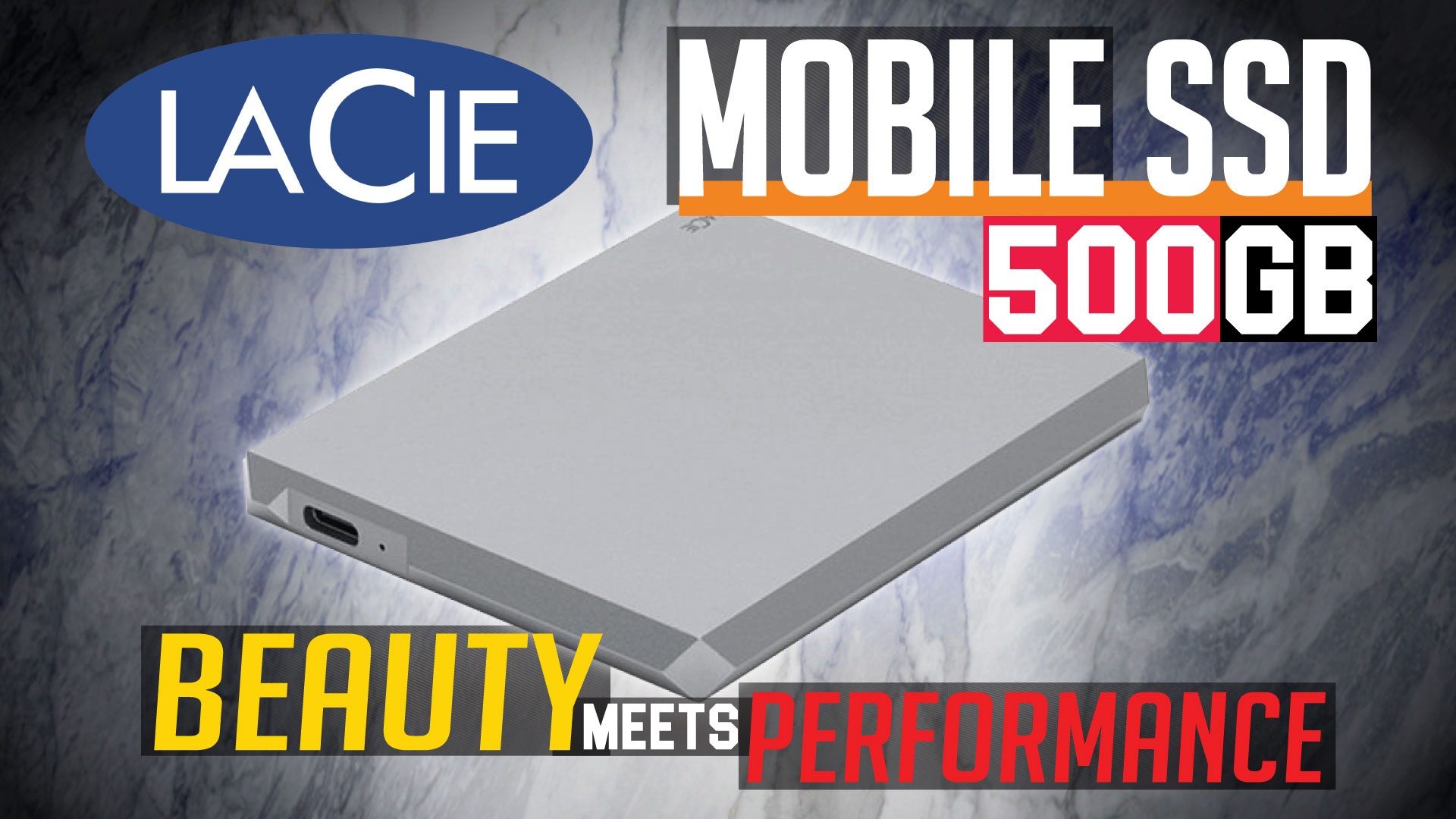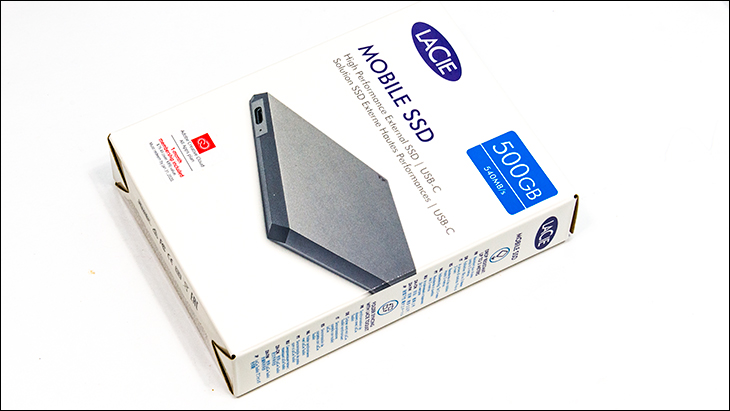
The LaCie Mobile SSD series uses a nicely sized cardboard shipping container that will never be ashamed of sitting in amongst Apple-branded products in an Apple store. It is clean, it elegant, and it is packed with information.

Better still it does a very good job of protecting the Mobile SSD while in transit as it uses two layers of protection. The exterior cardboard will shrug off life’s bumps and bruises, and the interior cardboard sleeve (which suspends the drive ‘in the air’ inside the box) will shrug off even more.

The list of accessories which accompanies this series is rather impressive. In addition to a warranty, and installation pamphlet, you will not only get a free month of Adobe Cloud access, you also get two data/power cables. The first is a USB Type-C / Thunderbolt 3 to Type-C / Thunderbolt 3 cable, and the second is a Type-C to Type-A adapter cable for older generations of USB ports. Basically, if you have a USB port this drive will most likely work with it… unless it is really, really old and can not push enough wattage to power a modern external drive that is. While not technically an ‘accessory’ what is also included with your purchase of this series is a three-year warranty that includes free data recovery – something very, very important with external devices as they do get rough handled a lot more than internal storage.
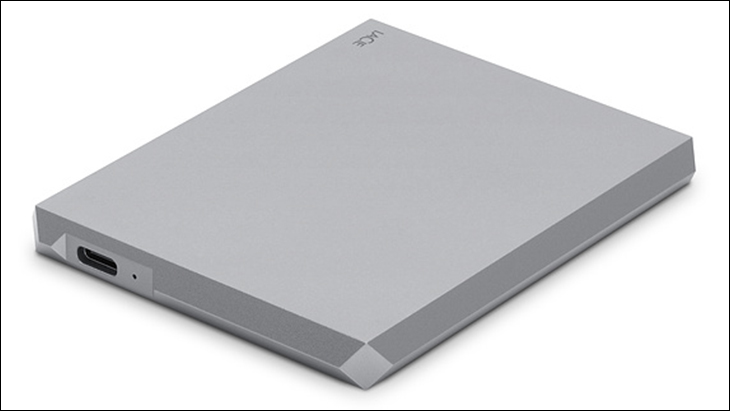
Let us start with the obvious feature of the LaCie Mobile SSD series. It is drop-dead gorgeous. Think LaCie Porsche with the elegance dial turned all the way to 11. Yes, this drive is gorgeous. It, however, is not gorgeous like a supermodel… even if it is as thin as one. Instead, it is understated and refined in its beauty. Yes, people will notice it, but not because it stands out like a sore thumb. Instead, it blends. It blends with nearly any environment.
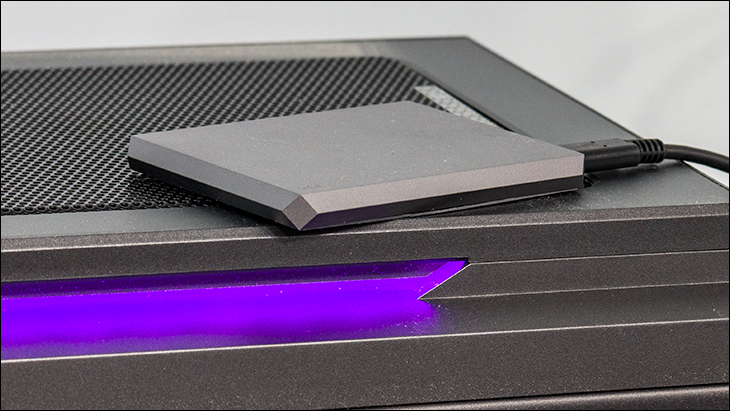
Yes, LaCie designed it around Apple’s MacBook (and why it comes in only ‘Space Gray’) but if you have any metal chassis laptop… it will blend nicely with it. In fact, it even blends nicely (albeit not perfectly) with a multitude of PC cases.

The reason it can be both stunningly attractive and yet hide in plain sight at the same time is because from more than a few feet away it just looks like a ‘silver’ case. It is only upon closer inspection you will notice the ‘diamond’ pattern to the edges. Mix in the fact that it is tiny – at only 98.3mm by 78.36mm by 9mm… and well you will have little fear using this little bad boy at your local Starbucks. We honestly doubt most criminals would notice it unless they were actively looking for it… and probably only then as your uber-expensive (and flashy) Apple laptop caught their eye first.

Moving beyond the looks, the LaCie Mobile SSD is not just a pretty face. This all-metal chassis is extremely sturdy. While LaCie only rates it for a ‘mere’ 3-meter drop… we doubt if you ran it over with a truck that it would be destroyed. Quite honestly this two-piece metal chassis is built like a bank vault and getting the little blighter apart takes time, patience, and extremely thin tools to break the press-fitting keeping both parts together.
The upside to this is that if you further want to make it waterproof… a dab of silicon along the bottom edge of the LaCie Mobile SSD case and over the led hole, along with a cheap silicon USB type-C plug will make it extremely water resistant. As it stands, and without any modifications, water damage from rain is going to be an incredibly rare occurrence… as there are only two openings. One for the small Type-C port (instead of larger Type-A like most companies use) and a tiny hole for the information LED (which blinks / glows white when the drive is being actively read from or written to).
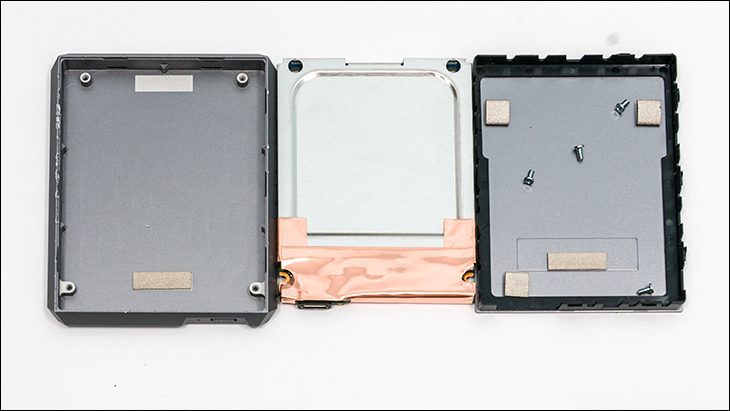
As expected, the LaCie Mobile SSD is not just a pretty, and yet durable, face. Instead the internals are cutting edge with incredible attention to detail. First and foremost is the USB/Thunderbolt adapter is entirely enclosed in copper foil. This reduces EMI and similar interference and ensures that the data that is transmitted to/from the SATA SSD gets where it is supposed to go without error.
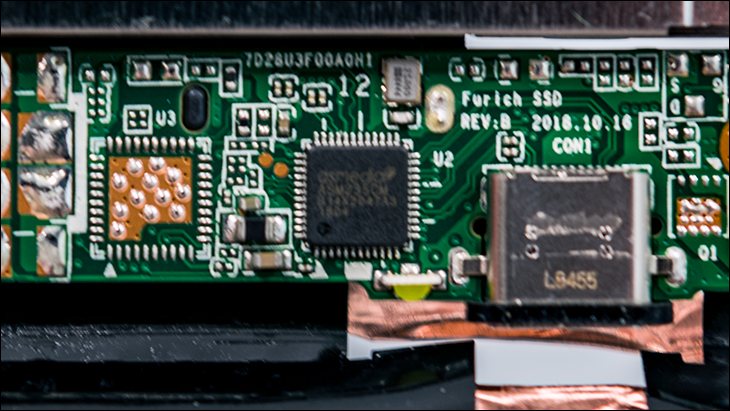
Hidden underneath the foil is an ASMedia ASM253CM controller. This small IC is what does the heavy lifting in converting the data signals from SATA to USB (or Thunderbolt) packets. This controller is an excellent choice – much better than the older ASMedia ASM1153e that many still rely upon it. On top of being a better performer, concerns over TRIM being passed along to the SATA SSD are moot. It works. First time every time.

The only small hitch is that to ensure Apple, Linux, and Windows compatibility ‘out of the box’ the LaCie Mobile SSD comes formatted to exFAT. This is the first thing you should change… as you can see. TRIM commands simply will not be passed on with exFAT.

Since we are using a Windows 10 based system, we almost immediately formatted it to NTFS. As you can see the TRIM command will then be passed along to the internal SATA SSD without worry. You may notice that we are not relying upon the ‘trimcheck’ application… as it is slow and sometimes will come back with wonky results. Instead a simple powershell (run as administrator) command like “Optimize-Volume -DriveLetter XYZ -ReTrim -Verbose” (with XYZ replaced with the drive letter)… works. It will immediately tell you if TRIM is working, and will clean/optimize the SSD’s NAND at the same time it is testing it. Win-win.
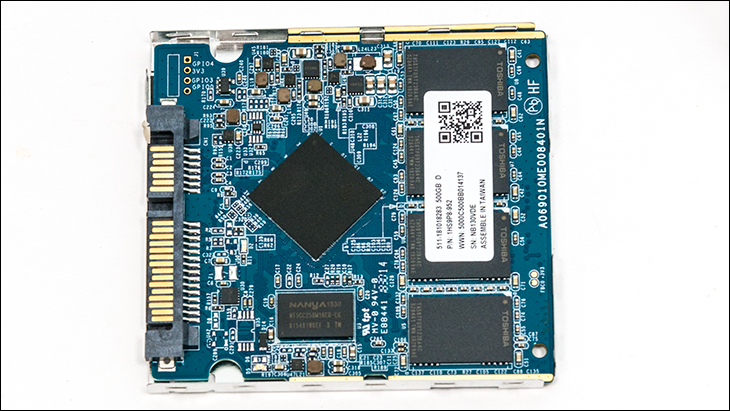
Moving on. The SATA SSD that is used a Seagate BarraCuda SSD. This means a powerful Seagate branded Phison S10 controller. Eight Toshiba 3D TLC BiCS NAND IC’s. Even a decent amount of onboard RAM cache (256MB). Put bluntly. This is a very, very good solid-state drive. One that is fast (for SATA) and stays fast. Better still it is also enclosed in an EMI protective covering – this time alloy instead of copper.
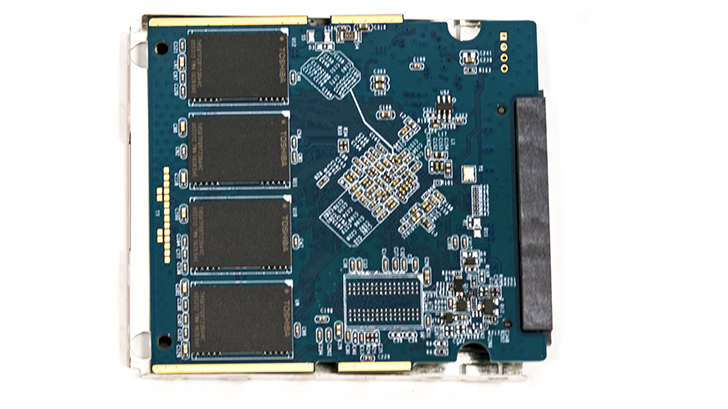
Before we move on some will question why did LaCie use SATA and not NVMe for their Mobile SSD series. The reason is pretty simple. USB 3.1 Gen 2 (just like Thunderbolt 3) has a maximum bandwidth of 10Gbps (1250MB/s). This may sound high… but even a ‘slow’ dual lane PCIe based NVMe drive would be bottlenecked by it… as each PCIe 3.0 lane is rated for 985MB/s. Put simply you would never, ever get a lot more performance for the dramatically increased asking price that using NVMe SSD (and NVMe to USB controller) would incur.
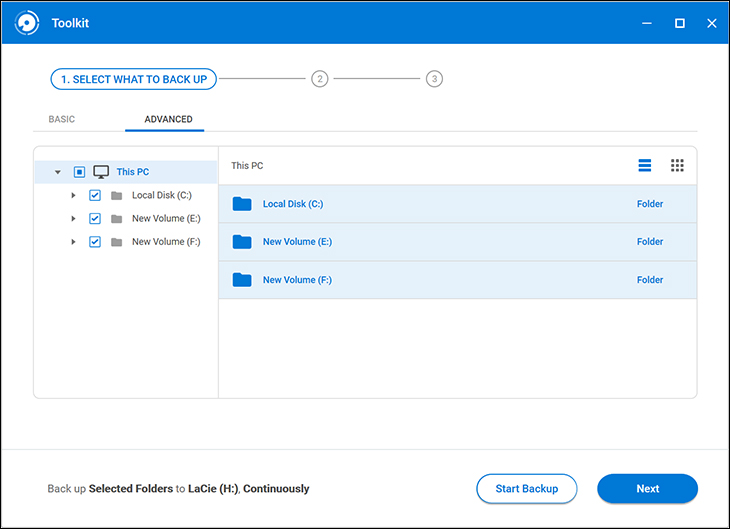
Moving on. The reason we stated ‘almost immediately’ when it comes to formatting is simple. It comes with a pretty decent backup/recovery software that works only with LaCie drives (or at least external devices which tell the software it is a LaCie drive).
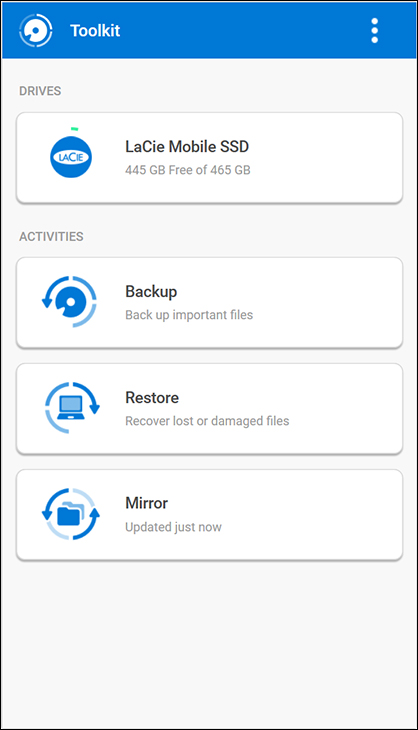
As with any software application, the LaCie toolkit can backup specific files, folders, even drives automatically. Better still is you can configure it to mirror any or all of the above via mirroring, which uses MS or Apple’s Shadow Copy (aka ‘VSS’) technology that can backup files even when they are in use. While this free application will never replace Acronis for a freebie it is a nice little bonus feature that does help offset some of the asking price.
